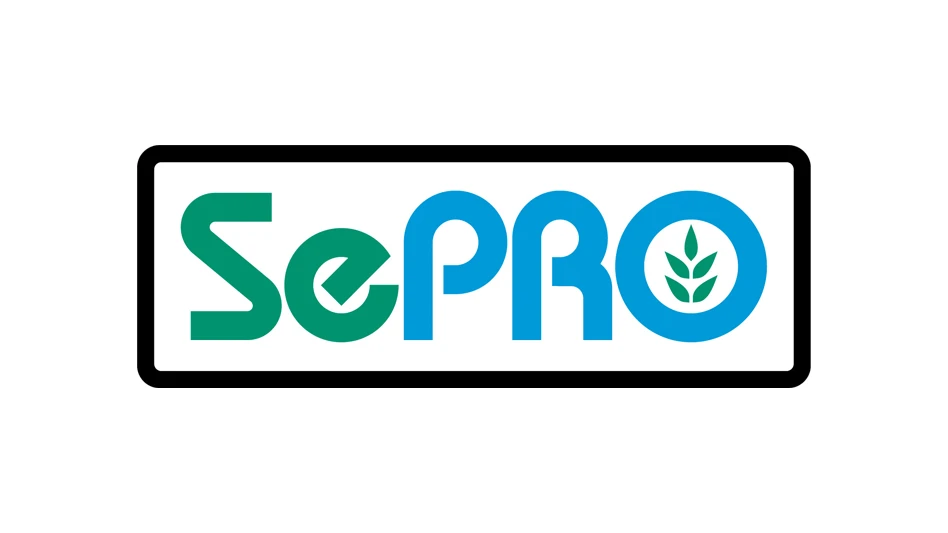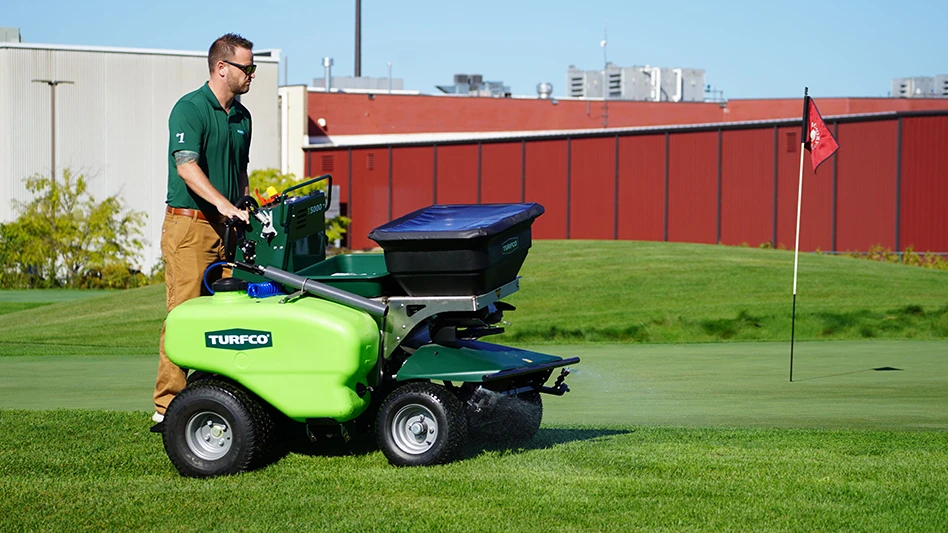A properly designed and installed golf course irrigation system should last for many years without major breakdowns or overhauls. In fact, the American Society of Golf Course Architects says some systems can last as long as 30 years. To achieve this operational capability, golf course superintendents need to perform routine maintenance to keep all the components of the system working optimally.
Proper grounding
One of the most important elements of preventive maintenance for golf course irrigation systems is grounding, according to Tom Rasmussen, an irrigation specialist with Reinders Co. in Elm Grove, Wis.
“The better the system is grounded, the better chance equipment will last longer,” he says. “Superintendents should check ground rods every year, cleaning and tightening the clamps.”
Rasmussen recommends having an irrigation specialist come on-site to perform a Megger test on the ground rods. This ground insulation, or Meg test, calculates the resistance of the insulation, a measure of its condition.
“The superintendent only sees a small portion of the rod on top of the ground, but every time the rod takes a surge, it dissipates,” he says. “You don’t know what’s happening underground, so it’s important to make sure the grounding is still good. I want 10 ohms of resistance on controllers and 5 ohms on the central controller, although I prefer 5 ohms everywhere. I recommend Meg testing ground rods every five years, and do a visual check every year.”
In addition to checking grounding, Rasmussen outlines other critical areas of a good preventive maintenance program for golf course irrigation systems: controllers, sprinklers, the pump station, a clean computer and keeping good records.
Controllers
As long as superintendents are inspecting the ground rods, they also should visually check the controller. They should open the cabinet and clean out cobwebs, dirt or debris, as well as check for damage caused by rodents. This is also a good time to check the wiring for any loose connections.
A solenoid test also should be conducted. Rasmussen recommends putting a multimeter on the station and checking solenoids from head to head to make sure they’re in good shape. If there’s a wired central controller in the office, superintendents should conduct an ohm check on the communication cable to make sure the path is clear and there’s good communication.
Tom Emmerich, an irrigation consultant based in Hartland, Wis., offers another tip for checking controllers.
“After a rainstorm, particularly if there has been a lot of lightning, check the controllers to make sure they haven’t sustained any damage,” Emmerich says. “Test everything to make sure it’s in good working order, so the next time you need the system, it will be operational.”
Sprinklers
In addition to controllers, golf course superintendents should check sprinklers. Come spring, Rasmussen suggests superintendents turn on every sprinkler head, watch them rotate and make sure they’re working. He says it’s also a good idea to check gate valves and make sure they turn on and shut off the water.
“It’s always reassuring to know that when you need them they’ll be working,” he says.
Before running a system, superintendents should remove the last sprinkler head in each line and let the water run for a few minutes to flush out any dirt and debris. Then they should replace the sprinkler heads and turn on the system, running one valve at a time.
After that, superintendents should observe the spray patterns and positions of the sprinklers for obvious problems such as clogged nozzles or misaligned part-circle heads. Some sprinkler heads might be tilted, surrounded by grass or even buried. If not positioned properly, these sprinkler heads will be unable to apply water efficiently. Some sprinklers also have built-in filter screens that might need to be cleaned and replaced.
Superintendents should watch for leaks and misting from sprinkler heads that might indicate high water-pressure problems, which can be corrected by plumbing a pressure regulator into the system. Pressure-regulating sprinkler heads are available, too.
Finally, superintendents should check to see that irrigated areas are being covered completely. They should consider adjusting the spray pattern, if possible, or replacing the nozzles with others that have the correct spray pattern.
“Make the necessary adjustments and repairs to the system to apply the water as evenly as possible,” Rasmussen says. “When this is done, turn the irrigation system on manually to make sure it’s operating as programmed.”
The pump station
Although not as visible as controllers and sprinklers, a pump station is the heart of an irrigation system and needs preventive maintenance, too. At the end of a season, or at least once a year, Rasmussen suggests superintendents:
• Check for cracks in pump casings;
• Make sure the impeller rotates freely;
• Ensure proper direction of pump rotation;
• Adjust packing;
• Check for worn bearings;
• Lubricate the pump and change the oil;
• Make sure the pump is secured to the platform;
• Make sure shafts are aligned properly;
• Check the condition of belts, chains and couplings; and
• Check for cavitation to make sure the pump isn’t starved for water.
Rasmussen recommends superintendents get into a rotation of having motors checked or rebuilt every 4,000 to 5,000 hours.
“In addition, inspect the wet well annually, making sure there’s no debris,” he says. “In some cases, a superintendent might need a diver to check the intake to make sure the screen is clean and free of debris.”
A clean computer
Even in the office, superintendents rarely work in a clean environment. But once a year, they should blow dust out of their computers with a can of compressed air and implement a replacement program.
“The life span of a computer is only three to five years,” Rasmussen says. “After that, you’re playing with fire. Computers actually can be the weak link in an irrigation system. Keep updated on software and other programs, and conduct regular virus and spyware checks.”
Keep good records
Yet another key to proper preventive maintenance for irrigation systems is keeping good records. It’s the best way to spot trends that can indicate it’s time to consider a new system, Rasmussen says.
“Even when you install a brand new system, 10 to 15 years later you’ll be thinking about doing it again,” he says. “Identifying maintenance makes it easier to explain replacement costs to the owner or board of directors. The more information you have, the easier it is to justify the expense.”
Rasmussen says superintendents should look at new control systems every seven years to see what’s available because technology changes quickly.
“With newer controllers, you can run as many as 16 solenoids at a time for satellites,” he says. “Older systems might only be able to run six solenoids. With more capacity, newer satellites can theoretically shorten the window and water more efficiently and quickly, using less electrical power. Newer controls allow the superintendent to run more programs at a time and have more backup.
“For example, if there’s a lightning strike at 2 p.m. that blows up your computer and radio commands, there’s no way for that satellite to water at night,” he adds. “On many systems, it can take as long as 24 hours of not communicating with a central control after a lightning strike before controllers will water on their own in a stand-alone mode. This requires the installation of satellites with stand-alone capability.”
Daily observations
In addition to Rasmussen’s critical areas, daily observation is an important part of preventive maintenance. It’s the most important element of Pat Sisk’s preventive maintenance program for his irrigation system. The first thing Sisk, who is the golf course superintendent of the Milwaukee Country Club, does is check the pressure gauge outside his office to make sure the readings are compatible with the pump station. He also checks the historical flow on the pump station to make sure it’s close to the predicted flow on the computer.
“When I make my first tour around the course, I check all the sprinkler heads, making sure they turn and aren’t leaking,” he says. “It takes some time, but it’s critical to everything else we do to keep the course in top playing condition.” GCN
David Wolff is a freelance writer based in Watertown, Wis. He can be reached at dgwolff@charter.net.
Get curated news on YOUR industry.
Enter your email to receive our newsletters.
Explore the April 2006 Issue
Check out more from this issue and find your next story to read.
Latest from Golf Course Industry
- Atlanta Athletic Club approves funding for master plan
- Maximizing Cultural Practices and Agronomic Benefits with Minimal Surface Disruption
- Real Answers about Spray Nozzle Choices
- From the Course to the Factory: How Customer Insights Drive Innovation
- New & Proven Enzyme Strategies for Sprayable Thatch Management
- Innovating Tomorrow: Wittek’s New Products & Industry Staples
- PBI-Gordon introduces new field development team
- The Cabot Collection announces move into course management





